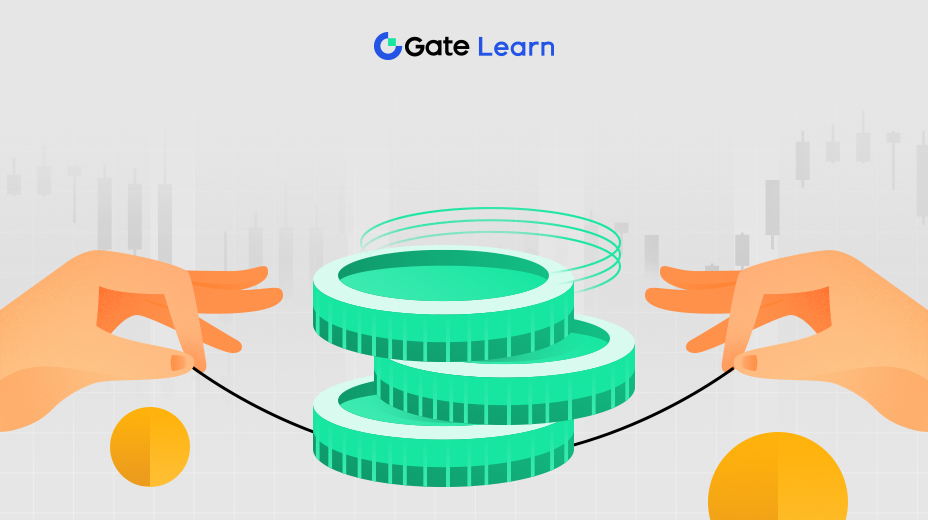Pertimbangan Keamanan Lapisan 2, Tantangan, dan Tren yang Muncul
Solusi penskalaan lapisan 2 mewakili kemajuan penting dalam mengatasi keterbatasan jaringan blockchain dan memungkinkan penerapannya secara luas di berbagai industri.
Karena teknologi blockchain terus berkembang, mengatasi keterbatasan yang melekat pada skalabilitas dan throughput transaksi tetap menjadi prioritas bagi pengembang. Solusi penskalaan lapisan 2 telah muncul sebagai pendekatan yang layak untuk meningkatkan kinerja blockchain sambil mengelola pertukaran keamanan.
Pelajaran ini akan membahas pertimbangan keamanan Lapisan 2, tantangan dalam mengintegrasikan dan mengadopsi solusi ini, dan pentingnya interoperabilitas lintas rantai. Selain itu, kami akan mengeksplorasi tren dan teknologi yang muncul di ruang Lapisan 2, menyoroti inovasi yang sedang berlangsung dan prospek masa depan sektor ini.
Pertimbangan Keamanan dan Pengorbanan dalam Solusi Penskalaan Lapisan 2
Solusi penskalaan lapisan 2 bertujuan untuk meningkatkan kinerja blockchain tanpa mengorbankan keamanan. Namun, pengembang harus memahami bahwa tidak ada solusi yang dapat memberikan keamanan mutlak, karena masing-masing memiliki kelebihan dan kekurangan. Saat menerapkan solusi Lapisan 2, sangat penting untuk mengatasi potensi kerentanan, risiko, dan tantangan, seperti:
- Kerentanan Kontrak Cerdas: Karena kerumitannya, kontrak pintar mungkin memiliki kelemahan yang dapat dimanfaatkan oleh pelaku jahat. Pengembang harus memastikan bahwa mereka menguji dan mengaudit kontrak pintar mereka dengan ketat untuk meminimalkan potensi risiko.
- Risiko Front-running: Solusi Layer 2 mungkin rentan terhadap serangan front-running, di mana penyerang mendapatkan keuntungan yang tidak adil dengan mengamati transaksi yang tertunda dan mengeksploitasi informasi tersebut untuk keuntungan mereka. Pengembang harus menerapkan langkah-langkah untuk mencegah serangan tersebut, termasuk menggunakan transaksi yang dikunci waktu dan teknik kriptografi.
- Keamanan Komunikasi Lintas Rantai: Memastikan komunikasi yang aman antara solusi Lapisan 2 dan blockchain utama atau solusi Lapisan 2 lainnya sangat penting. Pengembang harus menggunakan protokol yang kuat dan metode enkripsi untuk menjaga integritas data dan mencegah akses tidak sah.
Tantangan Integrasi dan Adopsi
Mengintegrasikan solusi Layer 2 ke dalam sistem yang ada dan mencapai adopsi yang luas dapat menjadi tugas yang kompleks. Pengembang dan organisasi harus mengatasi beberapa tantangan, seperti:
- Migrasi Pengguna: Meyakinkan pengguna untuk bermigrasi ke platform baru bisa jadi sulit, terutama jika mereka sudah nyaman dengan sistem yang ada. Untuk mendorong adopsi, solusi Lapisan 2 harus menawarkan manfaat yang jelas, seperti transaksi yang lebih cepat dan biaya yang lebih rendah, sekaligus memastikan keamanan dan privasi pengguna.
- Antarmuka yang Ramah Pengguna: Mengembangkan antarmuka yang intuitif dan ramah pengguna sangat penting untuk mendorong adopsi. Ini termasuk membuat proses onboarding yang mulus, dokumentasi komprehensif, dan memberikan dukungan berkelanjutan kepada pengguna.
- Interoperabilitas: Memastikan interoperabilitas yang mulus antara berbagai solusi Layer 2 dan blockchain utama sangat penting untuk mencapai adopsi yang luas. Ini mengharuskan pengembang untuk mengadopsi protokol standar dan berkolaborasi dalam inisiatif sumber terbuka untuk memfasilitasi komunikasi tanpa batas dan pertukaran data antara jaringan yang berbeda.
Interoperabilitas lintas rantai dan Solusi Lapisan 2
Interoperabilitas antara blockchain yang berbeda dan solusi Layer 2 menjadi semakin penting seiring pertumbuhan ekosistem blockchain.
Interoperabilitas lintas rantai memungkinkan pertukaran data dan aset dengan memungkinkan komunikasi dan interaksi tanpa batas antara jaringan blockchain yang berbeda. Ini dapat meningkatkan utilitas dan efisiensi solusi penskalaan Lapisan 2 dengan memungkinkan mereka berkolaborasi dan memanfaatkan kekuatan satu sama lain.
Untuk memastikan keamanan interaksi lintas rantai, sangat penting untuk memahami cara kerja protokol pihak ketiga dan tetap mengikuti perkembangan industri. Ini termasuk mengawasi perkembangan pertukaran atom, pertukaran terdesentralisasi, dan protokol komunikasi lintas rantai lainnya.
Teknologi dan Tren Lapisan 2 yang Muncul
Industri blockchain terus berkembang, dengan teknologi dan tren Layer 2 baru muncul untuk mengatasi tantangan dan keterbatasan solusi saat ini. Beberapa tren dan teknologi yang muncul ini meliputi:
- Bukti Nol Pengetahuan: Teknik kriptografi ini memungkinkan satu pihak untuk membuktikan validitas pernyataan tanpa mengungkapkan informasi apa pun tentang pernyataan itu sendiri. Bukti tanpa pengetahuan dapat digunakan untuk meningkatkan privasi dan skalabilitas dalam solusi Lapisan 2, memungkinkan transaksi yang lebih efisien dan aman.
- Rollup Optimis: Solusi penskalaan Lapisan 2 ini melibatkan penggabungan beberapa transaksi menjadi satu bukti dan mengirimkannya ke blockchain utama. Dengan demikian, throughput transaksi meningkat dengan tetap menjaga keamanan. Rollup yang optimis mendapatkan daya tarik sebagai solusi penskalaan yang menjanjikan untuk berbagai platform blockchain.
- Validium: Validium adalah solusi penskalaan Lapisan 2 yang menggabungkan elemen zk-rollup dan zk-SNARK untuk meningkatkan throughput transaksi dengan tetap menjaga privasi. Validium memindahkan pemrosesan dan penyimpanan data ke jaringan eksternal, dan hanya bukti yang disimpan di blockchain utama. Pendekatan ini membantu mengurangi beban pada rantai utama dan meningkatkan skalabilitas.
- Arsitektur multi-rantai: Saat ekosistem blockchain terus berkembang, arsitektur multi-rantai menjadi semakin populer. Arsitektur ini memungkinkan pertukaran data dan aset tanpa batas antara blockchain yang berbeda, memungkinkan solusi Lapisan 2 untuk memanfaatkan kekuatan beberapa jaringan dan meningkatkan kinerja secara keseluruhan.
Prospek Masa Depan dan Inovasi yang Berkelanjutan dalam Teknologi Lapisan 2
Seiring dengan semakin matangnya industri blockchain, solusi penskalaan Layer 2 diharapkan memainkan peran yang semakin penting dalam mengatasi skalabilitas dan keterbatasan kinerja jaringan blockchain yang ada. Beberapa potensi perkembangan masa depan di ruang Layer 2 meliputi:
- Peningkatan Kolaborasi dan Standardisasi: Seiring bertambahnya jumlah solusi Layer 2 dan platform blockchain, kemungkinan akan ada peningkatan upaya kolaborasi dan standardisasi untuk memastikan komunikasi yang mulus dan interoperabilitas antara jaringan yang berbeda.
- Pertimbangan Regulasi: Karena solusi Lapisan 2 semakin diadopsi secara luas, mungkin ada peningkatan pengawasan dan pengawasan regulasi. Pengembang dan organisasi harus siap memenuhi persyaratan peraturan dan memastikan kepatuhan terhadap undang-undang dan peraturan yang relevan.
- Mekanisme Keamanan yang Ditingkatkan: Upaya penelitian dan pengembangan yang sedang berlangsung kemungkinan akan mengarah pada pengenalan mekanisme keamanan yang baru dan lebih baik untuk mengatasi tantangan dan risiko unik yang terkait dengan solusi penskalaan Lapisan 2.
Kesimpulan
Solusi penskalaan lapisan 2 mewakili kemajuan penting dalam mengatasi keterbatasan jaringan blockchain dan memungkinkan penerapannya secara luas di berbagai industri. Pengembang dan organisasi dapat membuat pilihan yang terinformasi dengan baik mengenai penerapan dan penerapan solusi ini jika mereka memahami pertimbangan keamanan, tantangan, dan tren yang muncul di ruang Lapisan 2. Teknologi lapisan 2 diharapkan memainkan peran yang semakin penting dalam mengatasi tantangan skalabilitas dan kinerja, mendorong inovasi dan pertumbuhan dalam industri blockchain yang berkembang.





